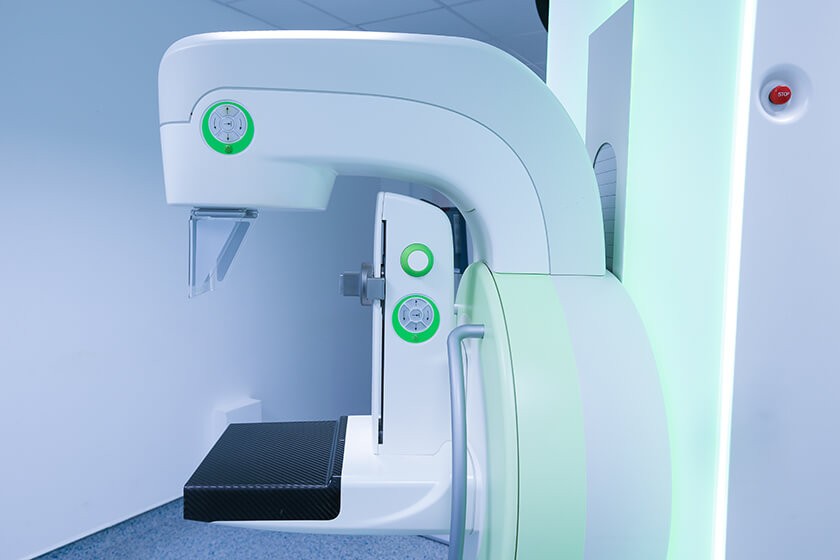
Can Contrast Hurt my Kidneys?

Your doctor may order an MRI, CT scan or other diagnostic tests to learn important information about a disease or injury, and to help in the diagnosis and treatment of the problem. Depending on your exact case, your doctor may request the use of a contrast dye to enhance the results of the test. While the tests and contrast dyes used are generally safe, the contrast eyes may lead to the development of kidney problems or cause problems in patients with kidney disease.
During an MRI or CT with contrast, the radiology team injects contrast dye into an intravenous (IV) needle. Contrast dyes typically contain iodine or gadolinium, which helps enhance the MRI or CT images. These dyes circulate through the bloodstream and eventually reach the kidneys. Tiny filters in the kidneys, known as glomeruli, work to filter wastes, drugs and toxins from the bloodstream.
Healthy kidneys are able to easily and quickly clear contrast dye from the system. Unhealthy kidneys, though, may be slower and less efficient when it comes to clearing the contrast from the blood. While the medical community has not yet determined exactly how contrast dye causes kidney problems, they think it has to do with this slow clearance of the dyes from the body.
Doctors use a number of tests to determine how well patients’ kidneys work to filter toxins from the body. These tests look for high levels of specific substances, such as creatinine, which the kidneys should have cleared. Traditionally, doctors have used serum creatinine tests to estimate how well the kidneys are functioning – a high serum creatinine levels means the kidneys are working poorly. Now doctors use an estimated glomerular filtration rate (eGFR), which combines information about the patient’s serum creatinine level, age, race and gender to help them assess how well the kidneys are working.
Types of Kidney Problems Associated with Contrast Dyes
Two rare but serious kidney disorders may develop as the result of the use of these dyes: contrast induced nephropathy and nephrogenic systemic fibrosis.
Contrast induced nephropathy (CIN) is a rare kidney disorder that affects only about 2 percent of patients receiving contrast dyes, according to the National Kidney Foundation. The risk for CIN is higher in some people, such as those who have diabetes, chronic kidney disease, or a history of heart or blood diseases. People with chronic kidney disease (CKD) have a 30 to 40 percent higher risk of developing CIN after receiving contrast dye than do people without CKD.
CIN is associated with a sharp decline in kidney function over 48 to 72 hours after receiving contrast dye. Symptoms of CIN are similar to those of CKD, which include feeling tired, puffiness around the eyes, loss of appetite, swelling in the feet and ankles, and dry, itchy skin. CIN is reversible in many cases, but the condition can lead to more serious kidney problems and potentially even heart and blood vessel issues.
Nephrogenic systemic fibrosis (NSF) is a rare but serious disorder that affects the skin and other organs in about 4 percent of people with advanced CKD who have received contrast dyes. People with acute kidney injury also have a higher risk of developing NSF. Signs and symptoms include itching and burning of the skin, red or dark skin patches, muscle weakness and joint stiffness. The condition can develop within 24 hours to 3 months of receiving the contrast dye.
Am I at High Risk for Kidney Problems Associated with Contrast Dyes?
Most patients with normal kidney function have no problems with the contrast dyes and therefore do not need any special preparations for undergoing an MRI or CT with contrast, but not everyone with impaired kidney function is aware that they have a kidney problem. The risk of kidney disease is higher in some people, such as those over the age of 60 or who have diabetes or other certain other illnesses. Questionnaires help doctors and radiologists identify patients who need additional laboratory testing, such as serum creatinine or eGFR, to determine their kidney function and ensure that the use of contrast dyes is safe.
How can I Reduce My Risk of Kidney Problems Associated with Contrast Dyes?
You can reduce the risk of CIN, NSF and other kidney problems associated with contrast dyes.
- Know your GFR, especially if you have chronic kidney disease or are at high risk for CKD
- Tell each member of your healthcare team about CKD, particularly if you need to undergo an MRI or CT
- If you need to have an MRI or CT, ask your doctor or radiologist about your risk factors
- Follow all instructions before, during and after the procedure
- Allow your body enough time to clear the contrast dyes before having more tests that use contrast
- Know the signs and symptoms of CIN and NSF
For more information about the use of MRI or CT contrast dyes and kidney problems, speak with your doctor or radiologist.




